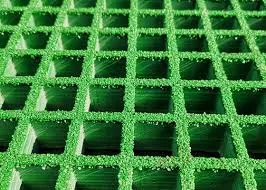
-
 Afrikaans
Afrikaans -
 Albanian
Albanian -
 Amharic
Amharic -
 Arabic
Arabic -
 Armenian
Armenian -
 Azerbaijani
Azerbaijani -
 Basque
Basque -
 Belarusian
Belarusian -
 Bengali
Bengali -
 Bosnian
Bosnian -
 Bulgarian
Bulgarian -
 Catalan
Catalan -
 Cebuano
Cebuano -
 China
China -
 China (Taiwan)
China (Taiwan) -
 Corsican
Corsican -
 Croatian
Croatian -
 Czech
Czech -
 Danish
Danish -
 Dutch
Dutch -
 English
English -
 Esperanto
Esperanto -
 Estonian
Estonian -
 Finnish
Finnish -
 French
French -
 Frisian
Frisian -
 Galician
Galician -
 Georgian
Georgian -
 German
German -
 Greek
Greek -
 Gujarati
Gujarati -
 Haitian Creole
Haitian Creole -
 hausa
hausa -
 hawaiian
hawaiian -
 Hebrew
Hebrew -
 Hindi
Hindi -
 Miao
Miao -
 Hungarian
Hungarian -
 Icelandic
Icelandic -
 igbo
igbo -
 Indonesian
Indonesian -
 irish
irish -
 Italian
Italian -
 Japanese
Japanese -
 Javanese
Javanese -
 Kannada
Kannada -
 kazakh
kazakh -
 Khmer
Khmer -
 Rwandese
Rwandese -
 Korean
Korean -
 Kurdish
Kurdish -
 Kyrgyz
Kyrgyz -
 Lao
Lao -
 Latin
Latin -
 Latvian
Latvian -
 Lithuanian
Lithuanian -
 Luxembourgish
Luxembourgish -
 Macedonian
Macedonian -
 Malgashi
Malgashi -
 Malay
Malay -
 Malayalam
Malayalam -
 Maltese
Maltese -
 Maori
Maori -
 Marathi
Marathi -
 Mongolian
Mongolian -
 Myanmar
Myanmar -
 Nepali
Nepali -
 Norwegian
Norwegian -
 Norwegian
Norwegian -
 Occitan
Occitan -
 Pashto
Pashto -
 Persian
Persian -
 Polish
Polish -
 Portuguese
Portuguese -
 Punjabi
Punjabi -
 Romanian
Romanian -
 Russian
Russian -
 Samoan
Samoan -
 Scottish Gaelic
Scottish Gaelic -
 Serbian
Serbian -
 Sesotho
Sesotho -
 Shona
Shona -
 Sindhi
Sindhi -
 Sinhala
Sinhala -
 Slovak
Slovak -
 Slovenian
Slovenian -
 Somali
Somali -
 Spanish
Spanish -
 Sundanese
Sundanese -
 Swahili
Swahili -
 Swedish
Swedish -
 Tagalog
Tagalog -
 Tajik
Tajik -
 Tamil
Tamil -
 Tatar
Tatar -
 Telugu
Telugu -
 Thai
Thai -
 Turkish
Turkish -
 Turkmen
Turkmen -
 Ukrainian
Ukrainian -
 Urdu
Urdu -
 Uighur
Uighur -
 Uzbek
Uzbek -
 Vietnamese
Vietnamese -
 Welsh
Welsh -
 Bantu
Bantu -
 Yiddish
Yiddish -
 Yoruba
Yoruba -
 Zulu
Zulu
FRP Duct System for Efficient Ventilation and Airflow Management Solutions
Understanding FRP Duct Systems A Comprehensive Overview
Fiber Reinforced Polymer (FRP) duct systems are an innovative solution widely used in various industries for efficient air and fluid transport. These systems are composed of polymer matrices reinforced by fibers such as glass, carbon, or aramid, providing them with superior strength, durability, and chemical resistance compared to traditional duct materials like metal or plastic. In this article, we will explore the key features, benefits, applications, and considerations of FRP duct systems.
Key Features of FRP Duct Systems
1. Lightweight One of the most notable properties of FRP ducts is their lightweight nature. This makes them easier and more cost-effective to transport and install, particularly in large-scale projects.
2. Corrosion Resistance FRP materials are inherently resistant to corrosion, which is particularly advantageous in environments exposed to harsh chemicals, moisture, or atmospheric conditions. This property greatly extends the lifespan of the duct system.
3. Thermal Insulation FRP ducts often provide better thermal insulation compared to metal ducts. This feature helps in maintaining the desired temperature of the transported air or fluids, reducing energy consumption in HVAC systems.
4. Flexibility in Design FRP duct systems can be custom-designed to meet specific requirements. Whether for unique dimensions or complex configurations, the molding capabilities of FRP allows for a variety of shapes and sizes.
5. Low Maintenance The durability and resistance to environmental damage reduce the need for frequent maintenance, resulting in long-term savings in both time and costs.
Benefits of FRP Duct Systems
1. Cost-Effectiveness While the initial investment may be higher compared to conventional duct systems, the long-term savings from reduced maintenance and replacement costs make FRP a cost-effective choice.
2. Environmental Impact With a focus on sustainability, many FRP manufacturers utilize recycled materials in their products. Additionally, the energy efficiency offered by FRP ducts contributes to lower carbon footprints.
3. Fire Resistance Many FRP materials can be engineered to provide fire-resistant properties, which is vital in applications within industrial settings or high-risk areas.
4. Improved Air Quality The smooth interior surfaces of FRP ducts minimize dust and microbial buildup, contributing to improved air quality in ventilation systems.
frp duct system

Applications of FRP Duct Systems
FRP duct systems find application across multiple industries due to their versatile nature
- HVAC Systems One of the most common applications of FRP ducts is in heating, ventilation, and air conditioning (HVAC) systems, where they help in efficiently moving air and maintaining optimal indoor environments.
- Chemical Processing The chemical resistance of FRP makes it an ideal choice for transporting aggressive fluids in chemical processing facilities, significantly reducing the risk of leaks and contamination.
- Marine Applications In marine environments, FRP duct systems are used for both air and water transport, benefiting from their resistance to saltwater corrosion.
- Power Generation Power plants utilize FRP ducts for flue gas handling and cooling water systems, where traditional materials may fail due to corrosive elements.
Considerations When Choosing FRP Duct Systems
While FRP duct systems offer numerous advantages, it’s essential to consider certain factors before making a switch. These include
- Temperature Limitations Different types of FRP have varying temperature resistance capabilities. It’s crucial to select a type that matches the operational temperatures of your system.
- Installation Expertise Proper installation is vital to ensure the long-term functionality and effectiveness of FRP duct systems. Work with experienced contractors who are familiar with FRP technology.
- Cost Analysis While evaluating costs, consider both initial investment and long-term operational savings to make an informed decision.
In conclusion, FRP duct systems represent a modern solution suitable for various applications requiring durability, efficiency, and safety. As industries continue to seek sustainable and innovative materials, the popularity and application of FRP ducts are expected to grow, providing enhanced solutions for air and fluid transport challenges.









